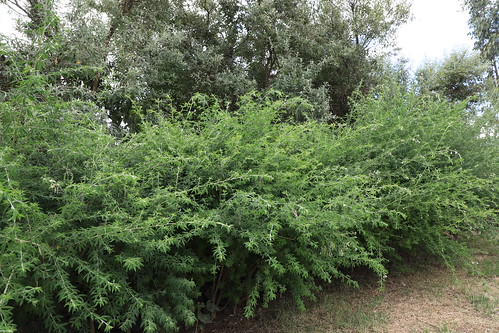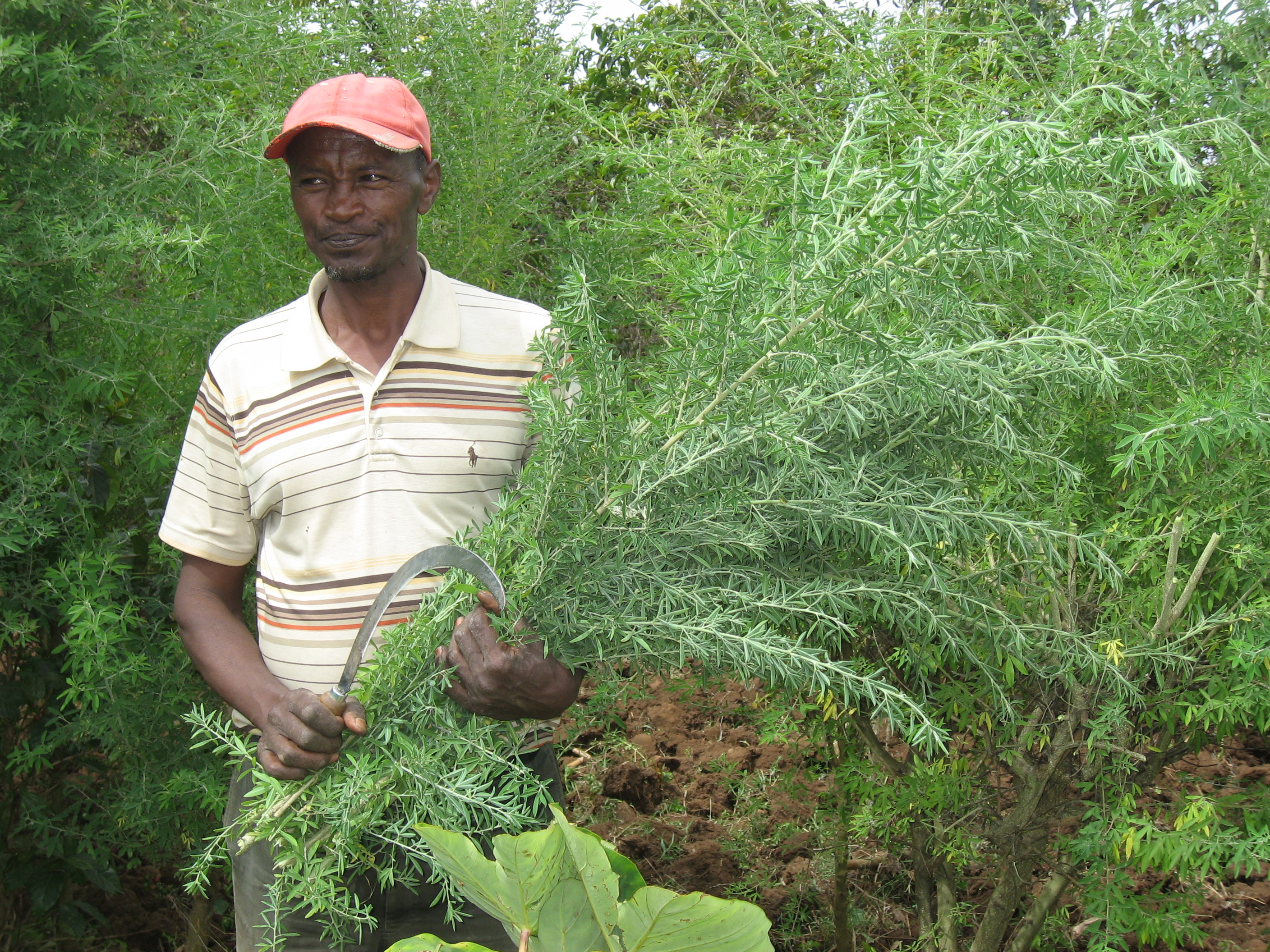Tree lucerne: an affordable alternative livestock feed supplement for smallholders in Ethiopia
Warning: Trying to access array offset on value of type bool in /home/africarising/public_html/wp-content/plugins/slideshare/slideshare.php on line 205
The challenge
In tropical Africa, livestock productivity is challenged, among others, by feed shortage and high seasonality in the availability and quality of feed resources (Bezabih et al. 2014). In the Ethiopian highlands, grazing lands have shrunk over the years and in some cases have been totally converted into arable lands to produce more food for the rapidly increasing human population (Mekasha et al. 2014; Mekuria et al 2018). This has led to high feed deficits, forcing smallholders to heavily depend on poor-quality crop residues to feed to livestock. Supplementation of these poor-quality feeds with energy and protein supplements has become a necessity to get optimal livestock output. Commercial concentrate feed supplements are often in accessible to smallholders due to economic and service delivery issues. On the other hand, on-farm grown leguminous fodder trees and shrubs appear to be good alternatives to supply economically affordable supplements for smallholders.
An alternative livestock feed supplement

Tree lucerne (Chamaecytisus palmensis L.), commonly known as tagasaste, is a leguminous fodder tree which is suited to the cool highland areas (2000 to 3000m above sea level) of tropical Africa, and especially Ethiopia. The foliage of tree lucerne is readily consumed by livestock and has high nutritional quality to be used as a feed supplement (crude protein content ranging from 18 to 24% and digestible DM ranging from 650 to 700 g/kg DM) (Mengesha et al. 2017, Bezabih et al 2018). The levels of phenolic compounds (tannins and alkaloids) in the leaves are generally below the levels expected to cause toxicity in ruminants (Assefa et al. 2008). The seeds can also be used as an ingredient in poultry rations.
Africa RISING role in promoting tree lucerne
Despite the potentials of using tree lucerne as on-farm-grown feed supplement, it has not been widely scaled and used by Ethiopian smallholders. In areas where it has been introduced, farmers have little knowledge on the management and utilization of the tree. The Africa RISING project in the Ethiopian highlands has identified this knowledge gap and implemented an action research to generate evidence that will help to better integrate the fodder in the farming systems and unlock its potential for the benefit of smallholders. The action research was started with the formation of farmer research groups (FRG) across eight research kebeles in the four regions of Africa RISING sites in Amhara, Oromia, Tigray and Southern, Nations, Nationalities and Peoples’ regions, with each FRG comprising 30-35 farmers. The action research included on-farm training packages on essential agronomic practices for tree lucerne cultivation starting from seed treatment, seedling raising, planting, and managing planted seedlings. FRG members planted 50-100 seedlings each and research data on growth, survival, biomass yield and forage quality visa-vis different management practices (1m and 1.5 m cutting height; 2×, 3× and 4× cutting frequency per year after nine months of growth) were generated.

Key findings
The result results showed that the key determinants of survival and growth of tree lucerne seedling in the smallholder system are fencing, watering, mulching and manuring (Mekonnen et al. 2017). Animal browsing at the early stages appeared to be the main cause of poor survival, and backyard fenced plots provided good growing environment for the fodder tree. Under good management, the tree was observed to reach a height of more than 2 metres within 9 months. The foliage biomass yield of 1-2 years old tree lucerne plantation ranged between 4-8 ton DM ha-1 under farmers’ condition.
Comparison between different cutting heights and frequencies revealed that a cutting height of 1.5 and frequency of 2-3 times per year provides the highest yield performance. Quality wise, the crude protein content of the foliage ranged between 24 and 25 % and the neutral detergent fibre content between 45 and 54%, confirming that it can provide the essential protein and energy supplements for animals that are mainly fed crop residue-based diets. Supplementation of approximately 300g of the leaf hay in fattening Menz sheep, which have been feeding barely straw basal diet, has improved feed intake and digestibility significantly and result in body weight gain in the range of 50-70g day-1, with a potential to totally replace commercial concentrates to fatten small ruminants under farmers’ conditions (Mengesha et al 2017). Similar positive effects were observed on milk yield of lactating cows with a potential for a kilogram of tree lucerne leaf hay to increase milk yield by about a litre and half. Framers observed reduced palatability of freshly cut tree lucerne leaf by cattle when offered for the first time. Wilting the leaf and mixing it with other feeds before feeding to cattle with no prior exposure to feeding the tree, solves the problem of reduced palatability.
Tree lucerne for other ecosystem services
The tree contributes to soil fertility improvement (fixing about 100 kg N/ha/year), control of soil erosion, carbon sequestration, live fence, and bee fodder, which makes it an ideal agroforestry plant in the mixed crop-livestock farming system (Mekonnen et al. 2009). The contribution of tree lucerne plantation in enclosures for carbon sequestration was calculated using data on above ground and below ground biomass accumulation as a reference after one year of growth. The results showed that the tree can accumulate 1.5 to 3.5 ton ha-1 year-1 of carbon. This indicates how the tree can also significantly contribute in sinking atmospheric carbon and helping mitigate the effects of climate change.
Impact observed
Overall, the action research allowed farmers and extension workers to gain relevant skills and experience on how to manage and use tree lucerne as a source of feed supplement and to amplify its multiple functions. After the implementation of Africa RISING action research and generation of on-farm data, local extension workers have started to guide farmers to cut the tree at approx. 1.5 m height, harvest the biomass and supplement it to livestock fodder in time. This was particularly visible in areas where the tree was introduced several years back (e.g. Amhara region) but poorly utilized. The impact of the action research on the knowledge of farmers and extension staff was found to be highly encouraging. Currently, Africa RISING phase II continues to work closely with development partners, mainly with offices of agriculture and livestock resources, in scaling tree lucerne fodder in highland areas.
More information can be accessed at:
-
https://doi.org/10.1017/S2040470018000146
https://link.springer.com/article/10.1007/s10457-016-0066-1 - https://link.springer.com/article/10.1007/s11250-017-1342-4
- https://www.sciencedirect.com/science/article/pii/S0377840107004312
Written By
Melkamu Bezabih, Scientist, Animal Nutrition, ILRI
Kindu Mekonnen, Scientist, Crop-Livestock, ILRI





Latest Comments